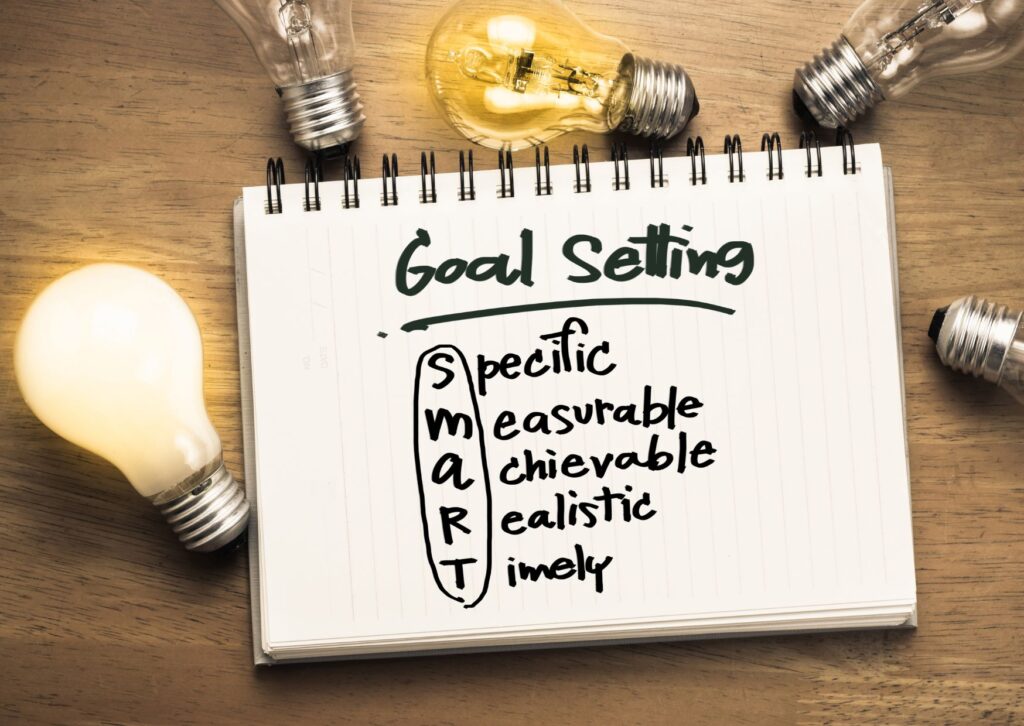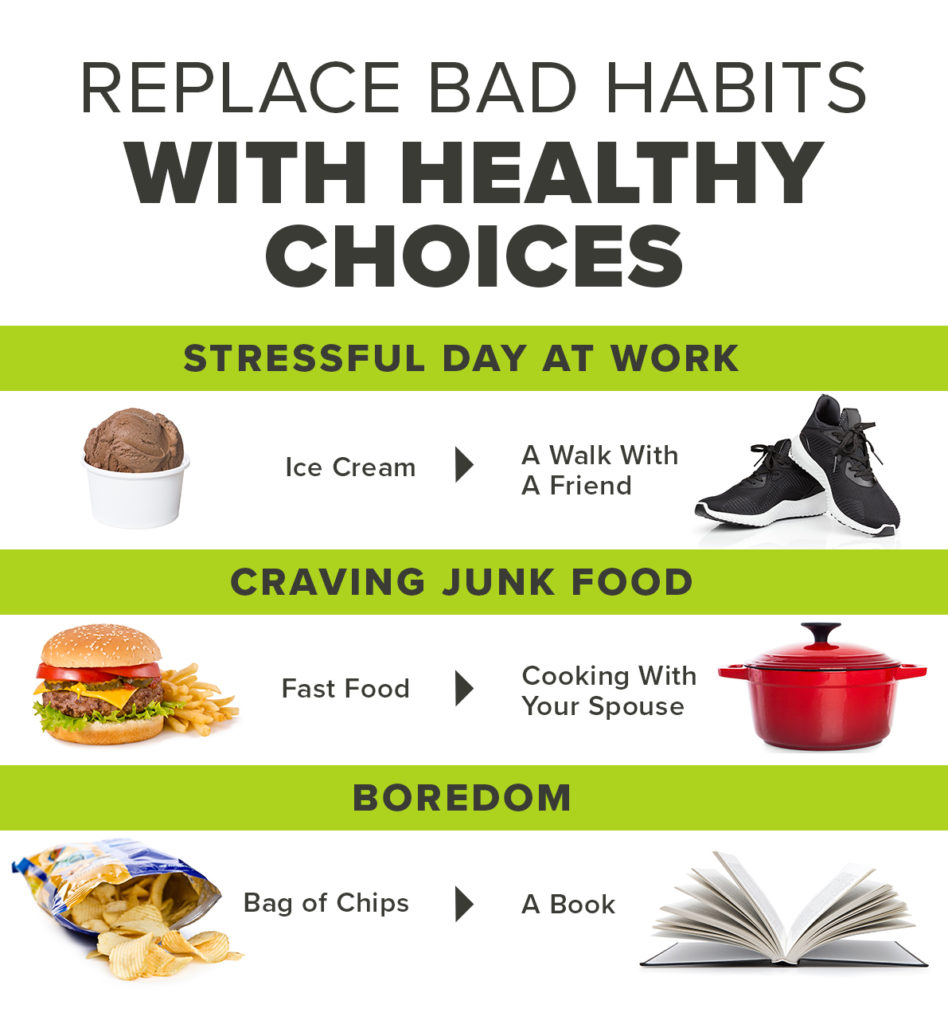Bad habits can derail our well-being, productivity, and long-term goals. Whether it’s skipping workouts, overeating, or excessive screen time, breaking these behaviors is challenging but essential. Building a sustainable healthy routine requires self-awareness, patience, and practical strategies.
This guide explores the science of habits, actionable steps to overcome unhealthy tendencies, and ways to create a lifestyle that fosters well-being. From understanding triggers to leveraging rewards, we’ll provide tools to help you stick to a routine that aligns with your goals. Let’s transform those unhealthy habits into positive actions that promote health, happiness, and balance.
1. Understanding the Habit Loop: Why We Form Bad Habits

Habits are patterns of behavior wired into our brains through repetition. Every habit consists of three key components:
- Cue: A trigger that initiates the habit.
- Routine: The behavior or action itself.
- Reward: The benefit or relief gained from the behavior.
Bad habits form because they offer immediate gratification or comfort. For example, stress eating might provide temporary relief from anxiety. However, these habits can lead to long-term consequences such as poor health or reduced productivity.
To break unhealthy behaviors, identify your cues and replace negative routines with positive alternatives that provide similar rewards. Awareness is the first step to reclaiming control.
2. Setting Clear Goals for a Healthy Lifestyle
Breaking bad habits begins with setting clear, achievable goals. Vague intentions like “eat healthier” or “exercise more” often lack direction and momentum. Instead, focus on specific and measurable objectives, such as:
- Replacing sugary snacks with fruits during the workweek.
- Committing to a 20-minute walk every evening.
- Limiting screen time to two hours per day.
Write down your goals, create a timeline, and track your progress. By aligning your habits with tangible outcomes, you’ll stay motivated and focused on positive change.

3. The Power of Small Changes: Start with Micro-Habits
Dramatic lifestyle overhauls often lead to burnout. Instead, focus on incremental changes that are easy to sustain. Small adjustments, known as micro-habits, can snowball into significant transformations over time.
Examples of micro-habits include:
- Drinking a glass of water before meals to curb overeating.
- Stretching for five minutes after waking up.
- Replacing late-night TV with reading for 10 minutes before bed.
These manageable steps are less intimidating and help you build momentum. As you master micro-habits, gradually expand them into larger commitments.
4. Replacing Bad Habits with Positive Alternatives
Breaking a habit isn’t just about stopping a behavior; it’s about substituting it with something healthier. This method, known as habit substitution, is highly effective.

For example:
- Replace smoking breaks with deep-breathing exercises.
- Swap sugary sodas for flavored water or herbal tea.
- Turn procrastination into productivity by using the Pomodoro Technique.
Identify the reward your bad habit provides and find a healthier alternative that offers similar satisfaction. Over time, this new behavior will become second nature.
5. The Role of Triggers and How to Manage Them
Triggers are the environmental or emotional cues that initiate a habit. Common triggers include stress, boredom, or certain social settings. To break the cycle, you need to:
- Identify Triggers: Keep a journal to track when and where bad habits occur.
- Modify Your Environment: Remove temptations, such as junk food from your pantry or social media apps from your phone.
- Develop Coping Mechanisms: Learn healthier ways to manage stress, such as yoga, meditation, or creative hobbies.
By addressing the root cause of your habits, you’ll minimize the likelihood of relapse.
6. Building Accountability and Support Systems
Accountability can significantly enhance your ability to stick to a healthy routine. Share your goals with friends, family, or a supportive community to stay motivated.
Strategies include:
- Partnering with a Friend: Work out together or check in on each other’s progress.
- Joining Groups: Participate in fitness classes, online forums, or wellness challenges.
- Using Apps: Track your habits with tools like MyFitnessPal or Habitica.
External encouragement reinforces commitment and helps you stay on track, even during challenging times.
7. Celebrating Progress and Rewarding Yourself
Breaking bad habits is a journey, not an overnight achievement. Celebrate your milestones, no matter how small, to maintain motivation.
Healthy rewards can include:
- Buying new workout gear after hitting a fitness goal.
- Treating yourself to a relaxing spa day after consistent progress.
- Enjoying a guilt-free cheat meal after maintaining a healthy diet for a month.
Rewards reinforce positive behavior and make the process of change enjoyable rather than daunting.
8. Overcoming Setbacks and Staying Resilient
Slip-ups are a natural part of breaking bad habits. Instead of dwelling on mistakes, treat them as learning opportunities. Reflect on what triggered the relapse and develop strategies to avoid it in the future.

Key tips for bouncing back:
- Avoid all-or-nothing thinking; progress is better than perfection.
- Revisit your goals and remind yourself of your “why.”
- Seek encouragement from your support network.
Consistency, not perfection, is the cornerstone of lasting change.
9. Creating a Long-Term Healthy Routine
Sustainability is essential for maintaining a healthier lifestyle. Once you’ve broken bad habits, focus on building a routine that integrates positive practices seamlessly into your day.
Tips for sustaining a healthy lifestyle:
- Establish morning and evening rituals to set the tone for your day.
- Schedule regular breaks to recharge your energy.
- Periodically evaluate your goals and adjust your habits as needed.
By embedding healthy behaviors into your daily routine, you’ll create a lifestyle that supports ongoing wellness and productivity.
10. The Psychological Benefits of Breaking Bad Habits
Beyond physical health, breaking bad habits has profound psychological effects. It boosts self-esteem, enhances mental clarity, and fosters a sense of control over your life. The ripple effect of positive habits often extends to other areas, such as improved relationships, better focus, and increased happiness.
The act of prioritizing your well-being empowers you to take charge of your life, setting the stage for long-term success and fulfillment.
Conclusion: Start Small, Stay Committed
Breaking bad habits and building a healthy routine is a rewarding journey that transforms your mind and body. By understanding the science behind habits, setting clear goals, and adopting small, manageable changes, you can achieve lasting results.
Ready to take the first step? Explore more wellness tips and resources on our website. Share your progress or challenges in the comments below, and let’s create a community of support for healthier living! Your journey to a better you starts today.

Leave a Reply